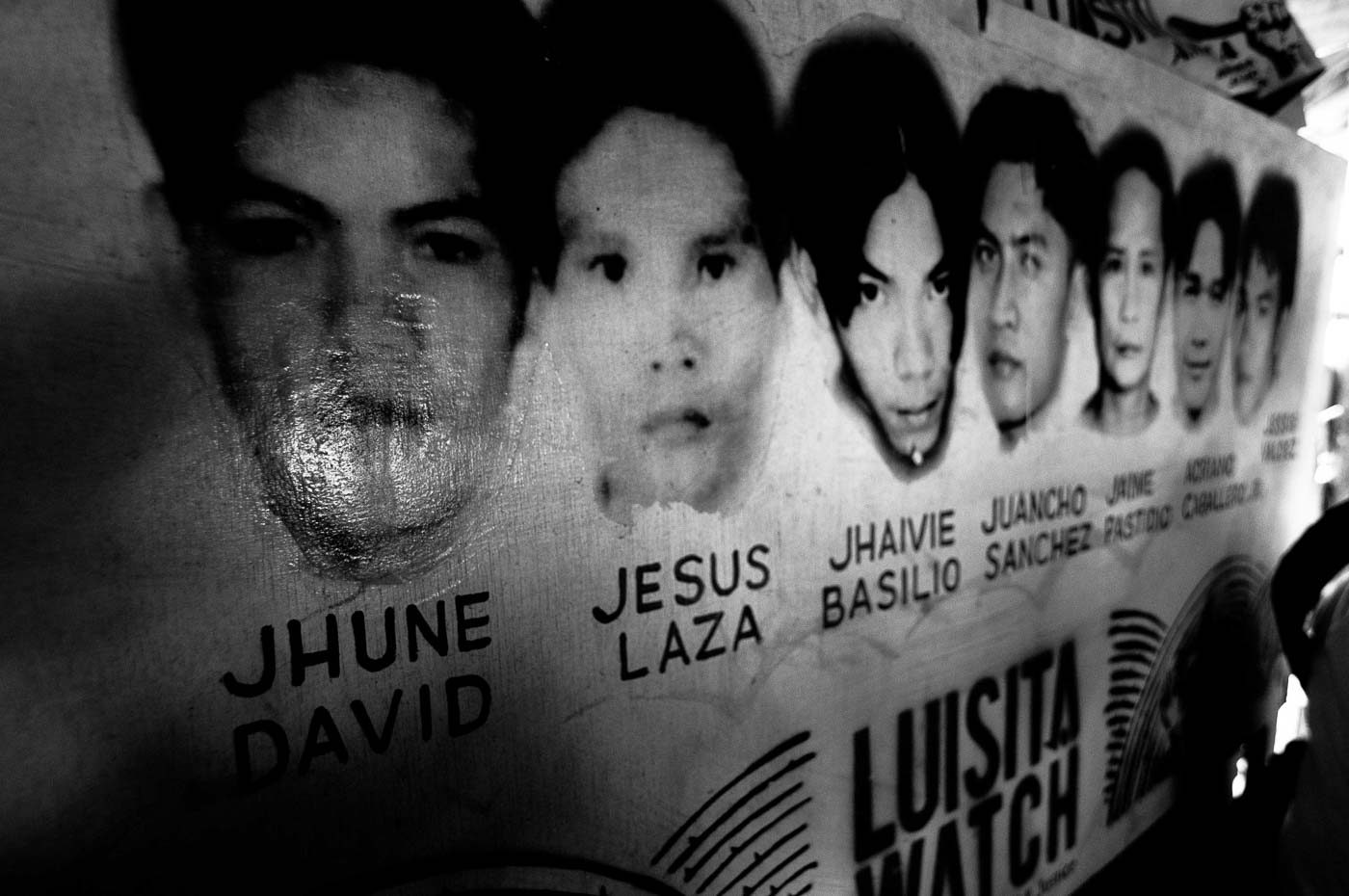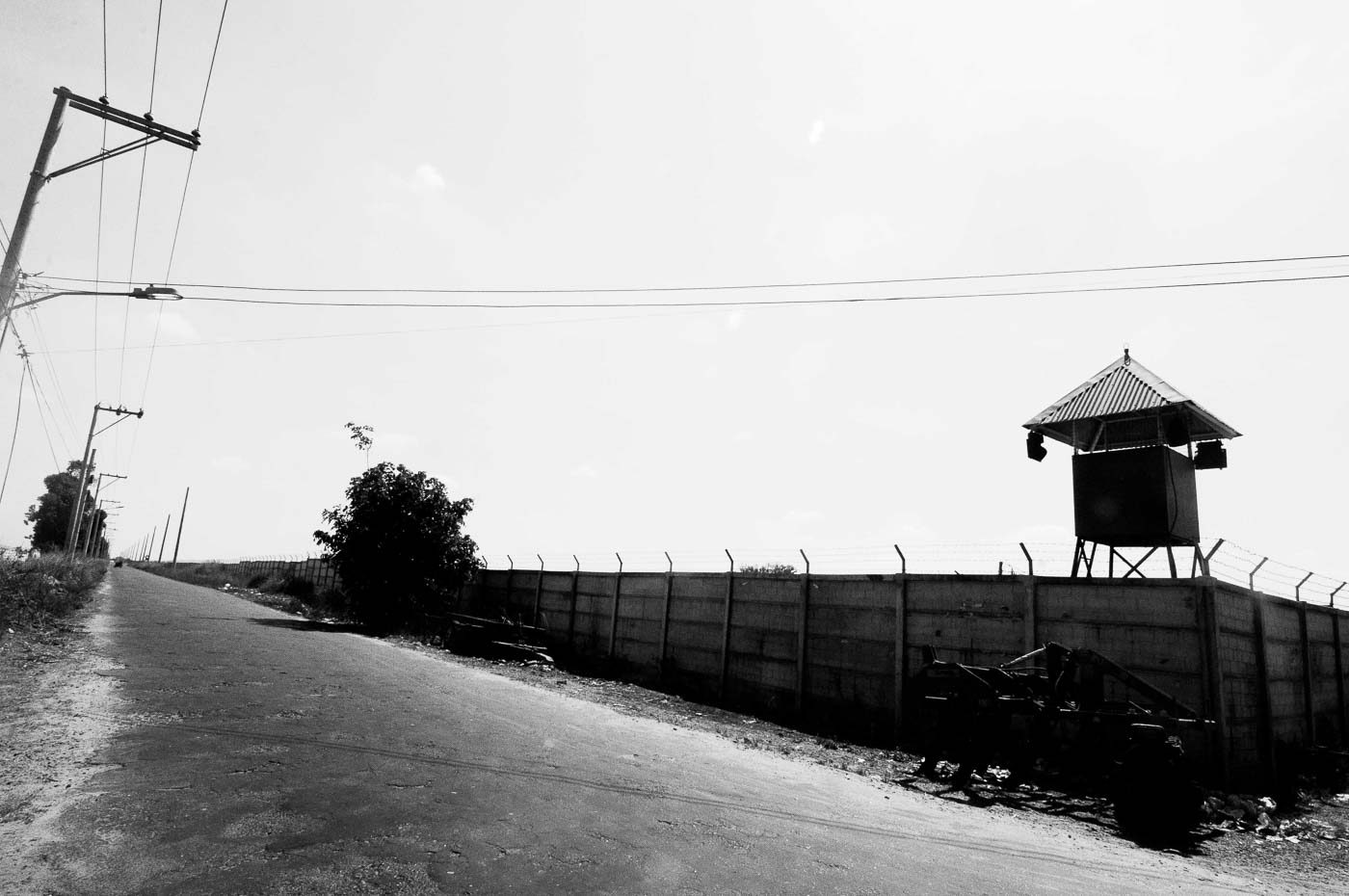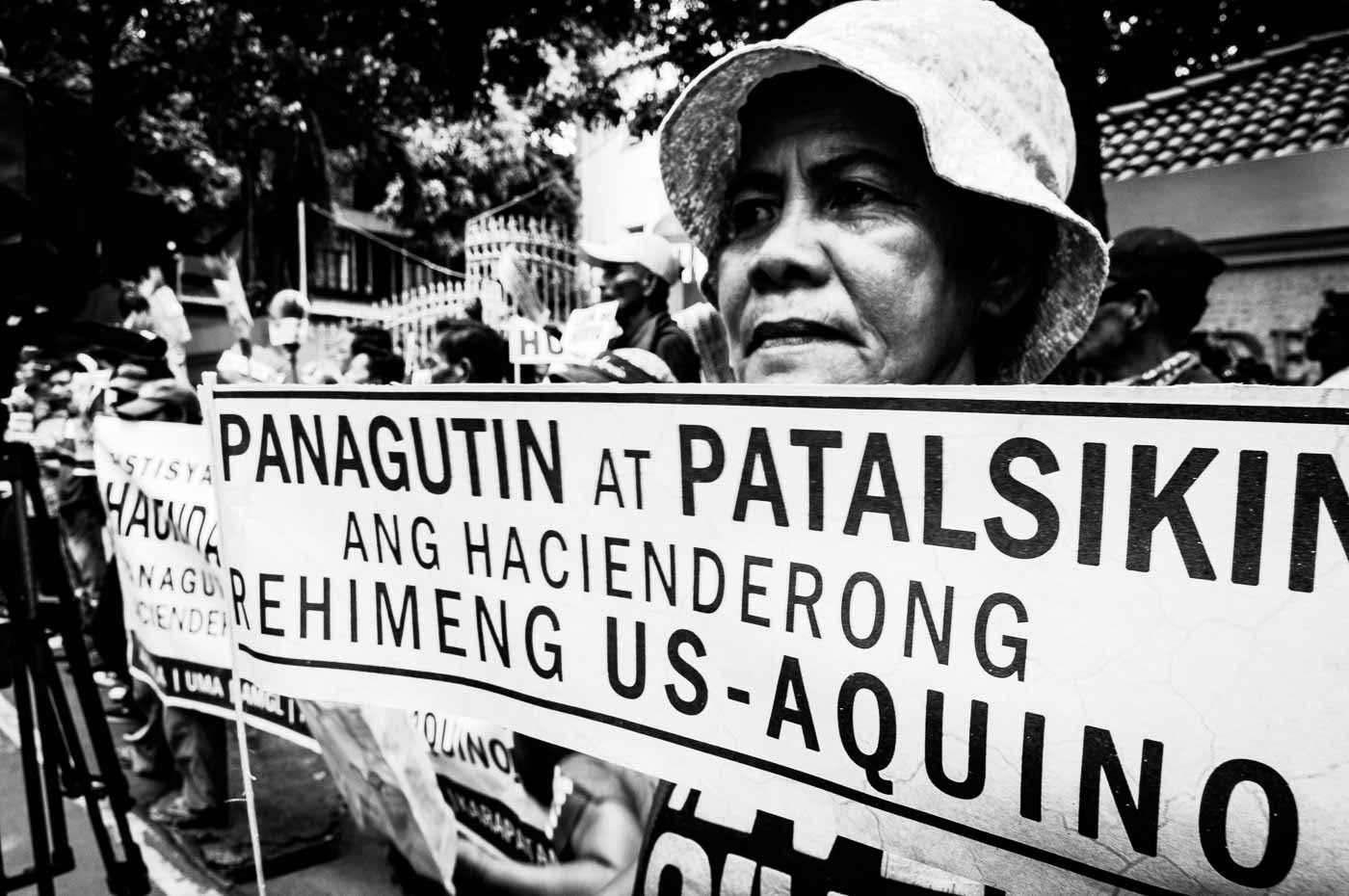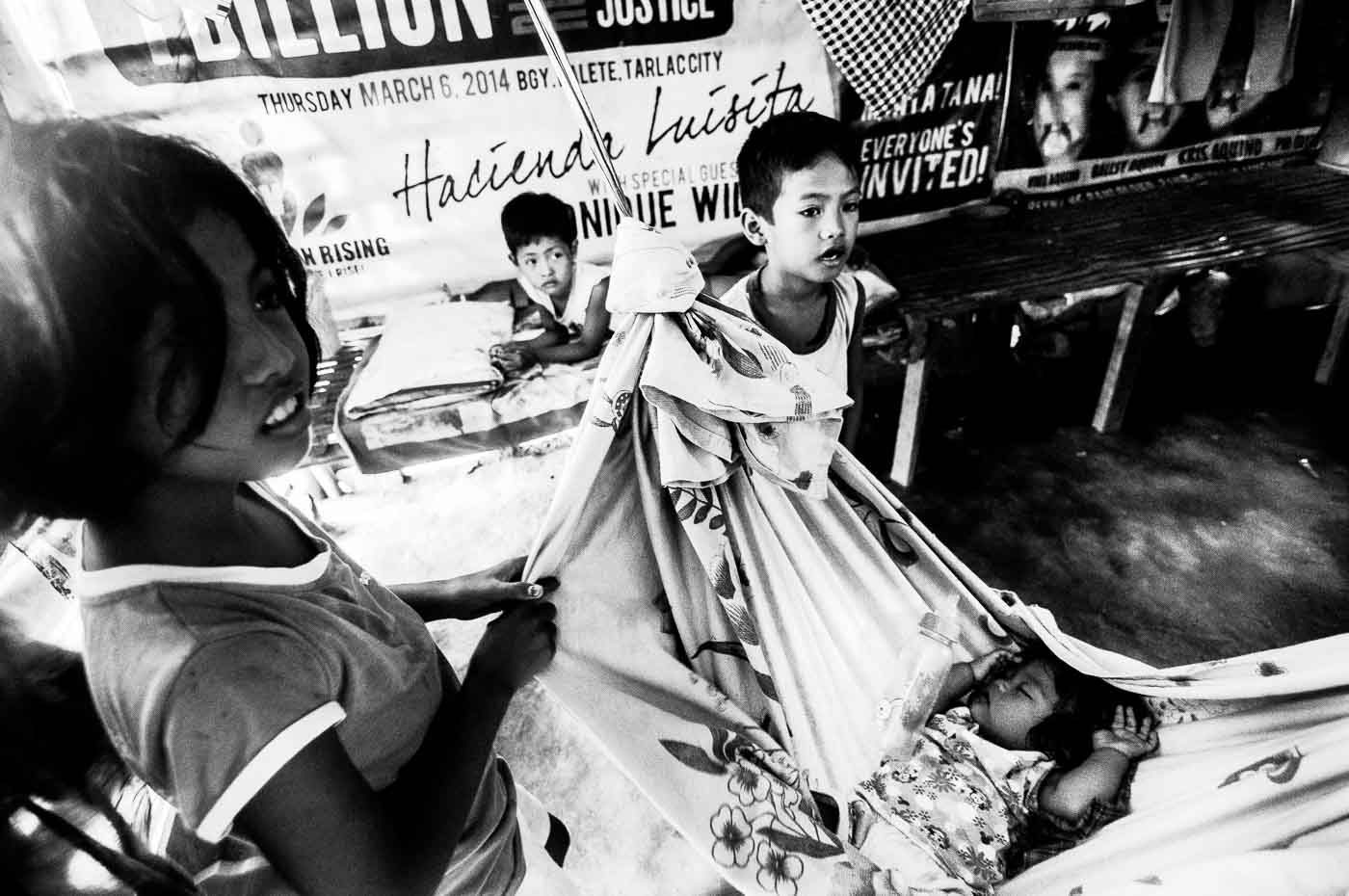SUMMARY
This is AI generated summarization, which may have errors. For context, always refer to the full article.

TARLAC CITY, Philippines—On November 18, hundreds of farmworkers and kin of martyrd farmworkers and supporters marched the dusty yard fronting Gate 1 of the sugarmill, Central Azucarera de Tarlac, to commemorate the 11th year of the infamous Hacienda Luisita Massacre.
“Bogus ang pamamahagi ng lupa sa Asyenda Luisita. Anong petsa na? Wala pa rin kaming lupa, wala pa ring hustisya. Ang mayroon lang, puro pambabakod at nakakoral na pinabayaang lupa,” lamented Florida “Ka Pong” Sibayan, chairperson of the Alyansa ng Manggagawang Bukid sa Asyenda Luisita (AMBALA), at the start of the program.
(The distribution of Hacienda Luisita lands is a scam. What date is it already? We still don’t have land, and we don’t have justice either. There are only walls and enclosures while rich agricultural lands are prevented from being productive)
CARP’s 28th year old life ended last year, but the 16th Philippine Congress now plans to resurrect this dead law — the longest running and most expensive ‘land reform’ program in the world.
Hailed as former president Corazon Aquino’s legacy, CARP set terms for redistributing public and private agricultural lands to landless farmers and farmworkers; it also included provisions for support services for beneficiaries in the form of farm inputs, capital for machinery, and infrastructure.
But in the very backyard of the Cojuangco-Aquino family itself, a 6,443 hectare-sugarland estate in the province of Tarlac, more popularly known as Hacienda Luisita, has yet to be significantly distributed to its farmworkers or agrarian reform beneficiaries (ARB).
Lot allocation left to ‘tadhana’
“Dito sa Asyenda, may forever. Forevermore ang panlilinlang, pandadahas, at pangangamkam (Here in Hacienda, forever exists. Maneuvers, threats and impunity, and landgrabbing are forevermore),” complains Ka Pong as she narrates the latest misdeeds of the Aquino government, its agencies, and the Cojuangco-Aquino family’s employees towards farmworker beneficiaries on their vast estate.
“Binola nila kami, dati SDO [Stock Distribution Option] ngayon naman tambiolo (We were teased to believe, before with SDO and now with tambiolo),” she added, about the Department of Agrarian Reform’s new method of distributing lots by lottery. It caused chaos, disunity, and confusion among farmworker beneficiaries.
Long-time tillers were pitted against each other as allocated farmlots were reshuffled, mixed-up, and muddled. Moreover, the lottery destroyed a long-standing bungkalan land cultivation campaign that had started during the people’s strike (welgang bayan) over a decade ago; it licensed the eviction of farmers, and allowed state forces and goons to destroy and bulldoze their ready-to-harvest crops.

The precursor of tambiolo (lottery) in Hacienda Luisita was the Stock Distribution Option scheme, implemented in 1989 in accordance with CARP, but later junked by the Supreme Court in 2012. The final Supreme Court decision declared the stock distribution plan agreement as “contrary to public policy,” observing it only worsened the condition of beneficiaries.
Of Hacienda Luisita’s 6,443 hectares, only 4,099 hectares have been distributed to farmers. Ka Pong was among hundreds of farmworkers in barangay Balete, Tarlac City that got assigned lots in barangays Pando and Mabilog – over 25-30 km away, in the municipality of Concepcion, Tarlac.
“One hundred fifty (Php 150) ang pamasahe sa traysikel; balikan 300 (Php 300). Araw-araw yan. E, ano pa ang kikitain ng mga magsasaka?” she asked.
(A one way fare costs P150; back-and-forth P300. That’s just one expense to deal with daily. How much will still be left to the income of the farmers?)
Ka Pong, and her turtle-paced struggle
In 1957, Don Jose “Pepe” Cojuangco Sr., grandfather of the current president, bought the lands of Central Azucarera de Tarlac, including Hacienda Luisita, from the Spanish-owned Compana General de Tabacos de Filipinas (TABACALERA). His purchase was underwritten by a loan from the Central Bank of the Philippines and the Government Service Insurance System (GSIS) – a loan that purportedly granted land distribution to tenant farmers after ten (10) years.
Just a few years later, in January 20, 1960, Florida Versoza, the eldest of ten siblings, was born in the dusty barrio of San Miguel (now barangay Balete, Tarlac City), in Hacienda Luisita.
Her father, Perfecto Versola, had been a sacada under the Spanish management, and continued to be a farmworker for the Cojuangco-Aquinos afterwards.
In 1967, at age 7, a young Florida already helped her father support their fast-growing family. She would sell lunch and snacks to the men, “truckers” in local parlance, delivering sugarcane to the Azucarera. The truckers would wait hours in line for their turn to enter the sugarmill.

That same year was the prescribed deadline for land distribution to tenant farmers, as stipulated by the loan contract made between the Cojuangco-Aquinos and the Central Bank.
But much to the dismay of the farmworkers like the Versola family, Dona Metring, Cory’s mother, denied the existence of tenants in hacienda before they could take over.
“Ano kami tipaklong? (What are we, grasshoppers?)” an older and much wiser Sibayan quips.
Luisita Farmers, #APECtado.
Luisita farmers were the first to call for President Benigno Aquino III’s ouster.
In his own backyard, a plan to convert hundreds of hectares of rich agricultural land into a grandiose economic zone is on-going. From 2013 to a recent landgrabbing spree of the President’s family, Florida Sibayan’s farm lot rich of ready-to-harvest palay were among those destroyed and buldozed, and farm hut burned, as state forces and hired goons illegally ejected farmers and fenced lots marked for “development”. Today foreign investors from APEC member economies continue to troop the fertile soil of Hacienda Luisita looking for prospects and investments.
“Building inclusive economies, building a better world, daw, pero tignan ‘nyo ang kalagayan namin (so they say, but look at our conditions now)”, quips Sibayan.
Now at 55, a mother of two and grandmother of 3 —but still a landless peasant— Sibayan travelled an arduous and long journey of experience to courageously stand at the forefront of peasant struggles for land and justice.

Ka Pong is a survivor of the Hacienda Luisita Massacre which marked its 11th year on November 16. With bullet marks in her back’s left shoulder blade as a souvenir, and dozens of new trumped-up cases invented and filed against her, at both the municipal and the regional trial courts in the Province of Tarlac, she had not stopped being the Cojuangco-Aquino’s target of ire.
While threats to her life continue as she performs her daily tasks in organizing and mobilizing sustaining protests, she vows, “…hindi kami masasanay sa pandadahas ng mga Cojuangco-Aquino, aaray kami at hindi mamamanhid, papalag at lalaban para sa aming mga karapatan!”
(We will never get used to the violence perpetuated by the Cojuangco-Aquino, We will never go numb, We will struggle for our rights!) –Rappler.com
Add a comment
How does this make you feel?
There are no comments yet. Add your comment to start the conversation.